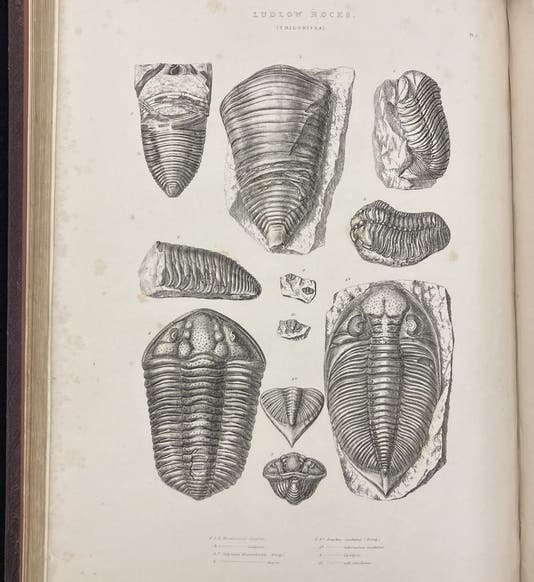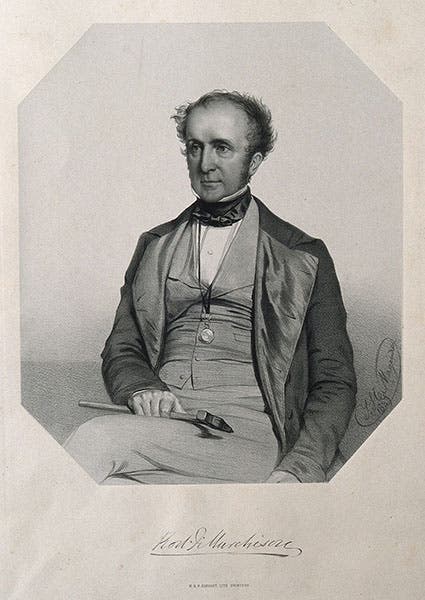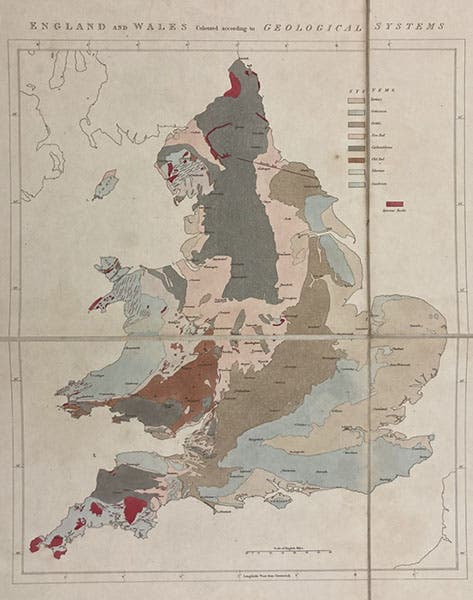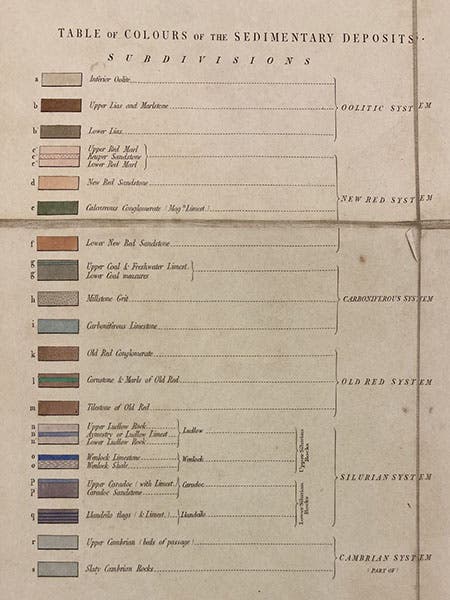Scientist of the Day - Roderick Murchison
Roderick Impey Murchison, a Scottish geologist, was born Feb. 19, 1792, in Muir of Ord, a village in the Scottish highlands. His family was landed and wealthy. Murchison trained for a military career, and after 8 years of service, he retired to Durham, England, and seemed headed for a life of leisure. But he ran into the chemist Humphry Davy in Durham, and Davy convinced Murchison that a pursuit of science was preferable to a pursuit of hounded foxes, and so Murchison took up the study of geology. He moved to London, joined the Geological Society of London, and was off on an illustrious career, ultimately becoming Director of the Geological Survey of Great Britain, in 1855, a position he held until his death in 1871.
Murchison married and spent several years living in Italy and studying the geology of Europe, before returning to England. About 1831, he began an investigation of the lower rock formations of southwestern England, which underlay the “Old Red Sandstone," long considered the oldest fossil-bearing formations in England. Working with Adam Sedgwick, the university professor of geology at Cambridge who was 7 years older, the two ventured separately into Wales in 1831 (Charles Darwin, fresh out of Cambridge, accompanied Sedgwick for a month or so, before returning home ro prepare for the voyage of HMS Beagle). Both Murchison and Sedgwick discovered fossil bearing systems in Wales that lay beneath the Old Red Sandstone (and hence were older). Murchison worked out the stratigraphy for his new system, which he called the Silurian system, and Sedgwick did the same for the lower-lying Cambrian system. Murchison published a sizeable book on his system, called, with great imagination, The Silurian System (1839). We have a set (one volume of text, one volume of plates, and one portfolio) in our collections, with a very nice binding, and with many plates showing the fossils (mostly trilobites) characteristic of Silurian strata, as well a hand-colored, engraved, folding geological map (the map was too large for me to photograph; our fourth image shows a reduced version that accompanies the large map). The legend for the map clearly shows Silurian and Cambrian as the two base systems (fifth image). The Old Red would be renamed later, not without controversy, becoming the Devonian system.
Unfortunately, Murchison grew possessive of his system, and he began to incorporate the upper parts of Sedgwick’s Cambrian system into his Silurian system, which did not please Sedgwick. When Murchison became Director of the Geological Survey, the maps issued by the Survey had no Cambrian system at all, just a very fat Silurian system. Not until after the deaths of both men would more dispassionate geologists restore the Cambrian, and incorporate the disputed strata into an intervening system, the Ordovician.
In 1840, Murchison began a geological survey of Russia (invited to do so by Tsar Nicholas I), accompanied by a Russian geologist, Alexander von Keyserling, and a Frenchman, Philippe Édouard de Verneuil. Among other things, the trio discovered, in the Perm Krai region of Russia, a new geological system that overlay the Carboniferous, or coal bearing strata. Murchison would name this the Permian system, a name we still use, as we do Devonian, Silurian and Cambrian. In 1845, Murchison published a two-volume work about his travels, The Geology of Russia in Europe and the Ural Mountains. This is an exceptionally lovely work, adorned with full-page tinted lithographs that are no end of delight. I do not show any of those images here, because I have written two posts illustrated with these lithographs; one on Keyserling, and another on Murchison's lithographer, Louis Haghe. There are 10 lithographs, many of them details, in these 2 posts, and they do not duplicate each other. I encourage you to take a look at them – you will not be disappointed. Someday I will write a post on Verneuil, and we will be able to use five more.
Murchison was made a Knight of the Bath in the 1860s, and a baronet, and he was elected to membership in nearly every scientific society in the world, and given all sorts of medals and honors. Not surprisingly, then, there are many portraits of Murchison from the 1860s, depicting him as senior exalted Victorian scientist. I prefer a pencil portrait that was drawn in 1849, when he was at the height of his geological powers but not yet famous (second image). The artist was Thomas H. Maguire, a lithographer who drew portraits of at least 64 British scientists between 1848 and 1851. We have used many of his lithographs in these posts. Someday, when I can discover a birth or death date for Maguire, he will get his own post. Meanwhile, you can see Maguire’s portrait of Charles Darwin as the second image at this post on Darwin.
There is an appropriate memorial for Murchison in Perm, Russia, consisting of a large chunk of Permian rock, on which is a tablet (in Russian) commemorating Murchison (sixth image). Geologists are luckier than most of us, in that they get to be memorialized by the objects of their studies. And none of those memorials are going anywhere, anytime soon, except in geological time.
William B. Ashworth, Jr., Consultant for the History of Science, Linda Hall Library and Associate Professor emeritus, Department of History, University of Missouri-Kansas City. Comments or corrections are welcome; please direct to ashworthw@umkc.edu.












